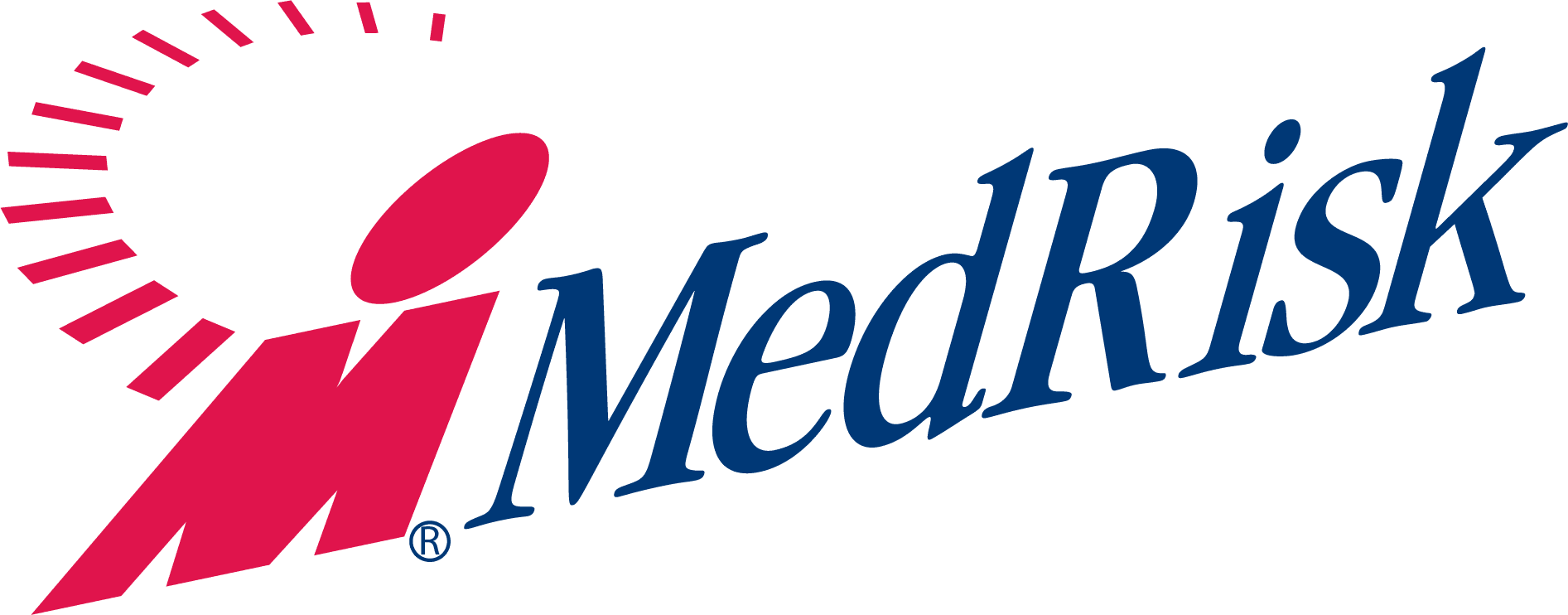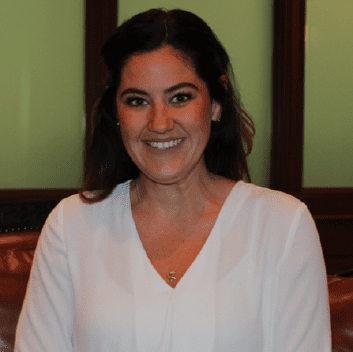Nov 9, 2021 | Company News
King of Prussia, PA (November 9, 2021)
MedRisk is pleased to announce that our own Jill Carnahan, PT, DPT was a finalist for this year’s Comp Laude® awards in the medical provider category. The awards program aims to change the narrative of workers’ compensation to a more positive dialogue and bring all stakeholders to the table to participate in the conversation.
When Jill Carnahan joined MedRisk in 2016, she made the shift from patient care to peer-to-peer review. While she enjoyed her work, she missed patient care. So, when MedRisk developed its own telerehabilitation program, she dove headfirst into what was uncharted waters at the time.
Since then, Jill has been on the front lines of telehealth, building a one-of-a-kind team of physical therapists (PTs) and helping develop a product that is secure and effective. She is a pioneer in ushering remote PT into the workers’ compensation industry. Before the pandemic, injured workers had mostly gravitated to telerehab for convenience. But when the pandemic struck, things changed quickly. MedRisk patients (and the workers’ comp industry as a whole) were suddenly ready to go virtual and Jill was there to lead and provide that much needed care.
Today, she spearheads MedRisk’s telerehabilitation program, seeing patients, managing its team of telerehab physical therapists and conducting telephone consultations following work-related injuries.
Because of her work in the telerehab space, she holds the unusual distinction of being a licensed PT in 33 states. Jill helps patients across the country and has received glowing reviews throughout her career. Her patients rave about her empathetic listening, easy-to-understand explanations and flexible care.
Jill earned her Bachelor of Arts degree in Psychology and Doctorate in PT from the University of Delaware in Newark, Delaware. She worked as a graduate assistant at the university’s PT clinic prior to graduating. She then worked as a staff PT at Jeanes Hospital in Philadelphia for a short time before moving to MossRehab. She worked there for over 10 years and successfully developed and grew the pelvic rehabilitation program for the Einstein Health Network.
We are so proud of Jill and her innovative team. Join us in congratulating Jill!
Nov 8, 2021 | Company News
King of Prussia, PA (November 8, 2021)
A chance encounter with a physical therapy pamphlet while serving in Vietnam changed the trajectory of Paul Beattie’s career. Today, his research is changing the world of PT: in the military, in workers’ compensation, the wilderness and beyond.
A charter member of MedRisk’s International Scientific Advisory Board (ISAB), a practicing PT for over 45 years and a Clinical Professor Emeritus in the Department of Exercise Science at the University of South Carolina, Paul Beattie, PT, PhD, FAPTA, is dedicated to improving lives through PT.
Particularly the lives of fellow veterans and active – duty members of the U.S. Army.
“Being a combat veteran is a kaleidoscope of good and bad experiences that you have for the rest of your life,” reflected Beattie. “I’m really lucky to have gotten through that and I’m grateful to have gone to college and become a PT.”
A U.S. Army veteran of Vietnam ’69 – ‘71, Beattie attended Quinnipiac College (now University) under the wings of Harold Potts, Chair and Founder of the PT Program—and WWII veteran looking to give other veterans a chance.
Beattie’s first job outside of PT school was for the Department of Rehabilitation Medicine at Manhattan Veteran’s Hospital. As his experiences as a PT evolved through the years – from student to practicing clinician to researcher to professor – Beattie eventually found himself in the same shoes as Potts: when veterans applied to PT school, he would always make a point to help them and he continues looking out for them today. A military family, Beattie’s son currently serves as a U.S. Army Captain.
It’s no question that the military lifestyle has made its mark on Beattie. Now, he is making his mark on the military with his unique PT experience and research.
PT Service & Research for Military Applications
For example, through his work with the Armed Forces Chaplaincy Center from 2004 – 2016, Beattie provided chaplain candidates with skills to help them support wounded, injured and emotionally distraught individuals in dangerous battlefield environments.
More recently, Beattie has become the co – principal investigator for a military team of PTs, pharmacists, physicians, nurses and clinical trial support members for a study funded by a grant from the Department of Defense to assess the effectiveness and efficacy of a drug targeting bone growth. Forteo, known generically as Teriparatide, is currently used to treat osteoporosis. The study is investigating the drug’s use to accelerate bone growth after a broken bone or stress fracture during military training or duty.
Based in the largest U.S. basic training facility at Fort Jackson in Columbia, South Carolina, the study has significant implications for active – duty force readiness. Stress fractures are common – up to 20 percent of trainees will get them – and this drug has the potential to speed healing, allowing members to stay on site for training or embedded with teams, rather than be evacuated.
“This could be an enormous advance for sports medicine implications, military implications, injured workers and the geriatric population,” Beattie said.
Beattie’s work has been instrumental in PT military applications. And the reverse is also true: Beattie is focused on extending military applications of PT into other areas, some conventional and others emerging.
Emerging Application: PT Military Model in the Wilderness
A common practice in the military is embedding PTs with special forces units such as Green Berets and Navy Seals. This model allows PTs to treat these highly elite tactical athletes onsite more effectively and prevent evacuation from often remote, difficult environments.
Recently, Beattie’s interest has been extending this model to wilderness applications with PTs as members of search and rescue, firefighter or park ranger teams.
“If we can prevent injuries and reduce evacuations and keep people functioning at point of contact, it’s a win – win situation,” said Beattie.
Beattie is currently promoting that PTs with unique skills embedded during fire season can significantly help injured wildland firefighters, in which the overwhelming majority of injuries reported are musculoskeletal: lower limb, back and shoulder sprains and strains. By embedding PTs close to the fire line, evacuations can drop up to 20% – saving enormous time and resources when they are needed most.
PT – First Care for Musculoskeletal Injuries
PT as a point of contact responder is becoming more common in conventional applications as well. For example, North Dakota recently began allowing injured workers with musculoskeletal injuries to see PTs directly without going to physicians first. Beattie agrees on this direction.
“During the COVID pandemic, hospitals have had problems with staff depletion as physicians and nurses shifted to work in the ICU,” said Beattie. “In emergency departments, which is a point of contact for acute musculoskeletal pain, PTs have been taking over as the primary care provider.”
He continued: “Compelling data has shown that when PTs are embedded in EDs, patients are seen faster and the number of images and other lab studies are reduced, saving costs and improving outcomes and overall patient satisfaction.”
Beattie’s interest in embedding PTs at important touch points – such as austere and wilderness environments and even the ED – is a testament to his dedication to progressing the PT profession.
Beattie’s Impact on MedRisk’s ISAB
As an APTA Catherine Worthingham Fellow, Beattie’s work is recognized as resulting in lasting and significant advances in the science, education, and practice of the PT profession.
Beattie continues to sit on MedRisk’s ISAB, offering his truly unique perspective and contributing to the Evidence – Based Guidelines in Injured Worker Treatment.
“It’s an incredible opportunity to meet so many talented colleagues,” said Beattie. “The ability to sit down with peers to synthesize evidence, appraise it and come out with a product – which is the guidelines – is challenging, but gratifying.”
Oct 4, 2021 | Company News
Psychosocial factors are a strong predictor for the development of chronic pain and pose barriers for return to work. How these are identified and addressed in physical therapy are the topic of MedRisk’s “Psychosocial Barriers of Returning to Work” webinar, Tuesday, October 19 at 1 p.m. EDT.
“Biopsychosocial factors have been associated with actual physical changes in the brain and nervous system that increase pain sensitivity and severity,” said Anne Marciniak, PT, DPT, the Team Lead of Clinical Services for MedRisk, who will present the webinar along with Katie McBee, PT, DPT, OCS, MS, CEAS, who is the Director of Workers’ Compensation and Pain Management Initiatives of Phoenix Rehab.
The hour-long presentation gives an overview of the biopsychosocial treatment model, which involves interaction among biological, psychological and sociocultural factors. Presenters discuss the use of a validated measure that identifies the presence of psychosocial risk factors and assigns a level of risk of poor outcomes.
In addition, it discusses the concept of a psychologically informed physical therapy practice, in which the therapist becomes a coach for self-management and behavior modification. This practice is designed to prevent functional limitations associated with pain.
MedRisk, Phoenix Rehab and DentalWorks USA are sponsoring the free, one-hour webinar, and continuing education credits are available for adjusters, registered nurses and nurse case managers in several states. Check here for details and to register for “Psychosocial Barriers of Returning to Work.”
About MedRisk
Based in King of Prussia, Pennsylvania, MedRisk is the largest managed care organization dedicated to the physical rehabilitation of injured workers. Clinically driven since its inception, the company has an International Scientific Advisory Board that developed and maintains physical medicine-specific, evidence-based guidelines for workers’ compensation. MedRisk, which has successfully completed SSAE 18 SOC Type 1 and 2 examinations, ensures high quality care and delivers outstanding customer service. For more information, visit www.medrisknet.com or call 800-225-9675.
Media Contacts:
Helen King Patterson, APR, King Knight Communications, 813-690-4787, helen@kingknight.com

Feb 4, 2021 | Company News
How did the first guidelines for physical therapy in workers’ comp come to be and how have they evolved over the years? Dr. Phil McClure discusses the core responsibilities of MedRisk’s International Scientific Advisory Board (ISAB).
Today, MedRisk is the largest specialty managed care organization dedicated to the physical rehabilitation of injured workers. But before it could grow its national network of physical medicine clinicians and develop its well-oiled patient advocacy program, it needed a strong, science-based foundation to build upon. Among the organization’s early “bricklayers” was Phil McClure, PT, PhD, FAPTA, professor and chair of Physical Therapy at Arcadia University in Pennsylvania, and vice president of MedRisk’s International Scientific Advisory Board (ISAB).
When McClure was recruited by Roger Nelson, PT, PhD, FAPTA, then-head of ISAB, in the 1990s, the group’s initial goal was a lofty one: to create the first-ever guidelines for physical medicine in workers’ compensation.
“Nowadays, every professional organization has guidelines and rules about creating them. But guidelines for our industry did not exist back then, so we were starting from scratch,” McClure said.
MedRisk’s clinical objectives for guidelines were to ensure appropriate treatment, eliminate unnecessary delays and medical costs, enhance communication among all parties, and promote better outcomes through changes in provider behavior. With no precedent to work from, the group began by discussing the fundamentals. How detailed should the guidelines be? How would they be structured? Initially, the board took a more prescriptive approach, advising certain treatments for certain diagnoses; however, they eventually concluded that a more flexible framework would benefit clinicians and patients alike.
“In many injury areas, the medical diagnosis doesn’t necessarily capture the degree of disability,” McClure said. “For example, if you lined up 100 people with rotator cuff tears, the amount of disability would vary a lot. Just because a patient has the label doesn’t mean it encompasses the entire problem.”
The current guidelines allow for individualized, patient-centric treatment and provide specific procedure-based guidance for cases that are flagged for review due to delayed recovery. They incorporate evidence-based recommendations on which procedures have been shown to be effective in helping injured workers regain function from a particular injury.
Many of the ISAB board members conduct research within their own specialties in physical medicine and monitor trends in their fields as they update and maintain guidelines for MedRisk. What began as a concerted effort by a half-dozen experts in the field has now become a rigorous review process by 13 board members, including several physical therapists, physicians, a chiropractor, and a clinical psychologist, as well as industry thought leaders with active research agendas and extensive publications.
These varying perspectives provide a well-rounded approach to new areas of concentration, which over the years have included creating guidelines for the treatment of concussion and updating recommendations on treating hand and wrist injuries. A current priority is to explore new methodologies for documenting patient outcomes – also a focus of McClure’s own research on shoulder injuries.
The workers’ compensation industry largely looks to data points like treatment duration, cost, and functional measures like strength and range of motion to measure patient outcomes. However, patient-recorded outcome measures (PROMs), which are derived from surveys completed by the patient, can provide additional insights into the value of treatment.
“PROMs just add to our understanding of the patient experience,” McClure said. “When we stop to ask them, ‘How much difficulty do you have putting on your shirt, tying shoes, running or climbing steps?’ this helps us see how treatment impacted their life and how they are doing now that it is complete.”
Another area of attention for the board has been telerehabilitation. As utilization rates have risen throughout the pandemic, the board continues to monitor new evidence that emerges on the applications and efficacy of virtual PT.
Similarly, ISAB has had to find ways to perform its work from a distance throughout the pandemic; however, the group’s commitment to its founding mission remains as strong as ever.

Oct 29, 2020 | Company News
MedRisk, the leader in physical rehabilitation in workers’ compensation, has published its 2021 Outlook.
The industry trends report prepares payers for managing the effect COVID-19 has had on musculoskeletal claims, recaps pertinent 2020 legislative/regulatory actions, and highlights recent research.
“Researchers predicted it would take about 45 weeks to catch up with a backlog of surgeries and other medical procedures postponed because of COVID,” said COO Mary O’Donoghue. “Our data reflects this with significant fluctuations in post-surgical PT referrals as states closed and reopened, and this could happen again as cases spike.”
Post-surgical or not, some workers’ comp patients did not start or continue physical therapy during the pandemic. Soft tissue injuries that do not receive timely physical therapy treatment tend to have higher medical and indemnity costs than similar claims without delays in physical therapy treatment, according to the Workers’ Compensation Insurance Rating Bureau-California October 2020 study, highlighted in MedRisk’s Outlook.
MedRisk moved quickly to facilitate fast time to treatment during COVID restrictions, leaning on its International Scientific Advisory Board to incorporate its metrics with CDC guidelines to help adjusters and patients decide if in-clinic or telerehabilitation care was most appropriate.
“We also expanded hours and the type of cases treated via telerehab, working closely with adjusters and network providers on necessary transitions,” said O’Donoghue. “We saw excellent outcomes and high levels of patient satisfaction.”
Depression, anxiety, and substance abuse rose significantly during 2020, according to the CDC and the American Medical Association. MedRisk’s data also showed a significant increase in self-reported anxiety and depression among injured workers. These psychosocial factors can result in delayed recovery.
“Insurers, TPAs and employers need to prepare for the long-term impact of COVID on the duration of care and total medical costs,” O’Donoghue said. “Our new predictive analytics platform and proactive interventions can help identify the high-risk patients and help reduce total claims cost – not just PT.”
About MedRisk
Based in King of Prussia, Pennsylvania, MedRisk is the largest managed care organization dedicated to the physical rehabilitation of injured workers. Clinically driven since its inception, the company has an International Scientific Advisory Board that developed and maintains physical medicine-specific, evidence-based guidelines for workers’ compensation. MedRisk, which has successfully completed a SSAE 18 SOC Type 1 and 2 examinations, ensures high quality care and delivers outstanding customer service. For more information, visit www.medrisknet.com or call 800-225-9675.
Feb 6, 2020 | Company News
King of Prussia, PA (February 06, 2020)
Nearly 20 years after its inception, the MedRisk Instrument for Measuring Patient Satisfaction (MR-12) continues to be employed in international physical medicine research.
In addition to clinical outcomes, patient satisfaction can be a critical component of assessing treatment effectiveness.
Such was the case for a recent randomized control trial intended to measure electroacupuncture efficacy in older adults with low back pain (LBP). The 2019 study, conducted at the University of São Paulo in partnership with the Federal University of Paraná (both in Brazil), examined the study groups’ pain intensity levels as well as several secondary factors of patient experience. In the study team’s search for an objective, standardized tool to measure patient satisfaction, they chose to employ the MedRisk Instrument for Measuring Patient Satisfaction (MR-12).
Developed by MedRisk’s academic and research arm Expert Clinical Benchmarks (ECB), the MR-12 is a questionnaire that contains 20 items meant to capture the patient’s experience as it relates to treatment, the service provided and the therapist-patient relationship. Factors range from the interpersonal skills of the therapist and office staff to the education provided to patients to the convenience and cleanliness of the clinic.
While the questionnaire has been a vital tool in strengthening the MedRisk provider network and proprietary patient-to-provider matching system, its effects don’t stop there. Since its initial validation in the United States in 2001, the MR-12 has been translated and culturally adapted for specific populations around the world. To date, it has been utilized in more than 30 countries and has helped identify some of the key factors that positively influence satisfaction in the field at large.
To see just one example of the MR-12’s utility in contemporary physical medicine research, click here.






